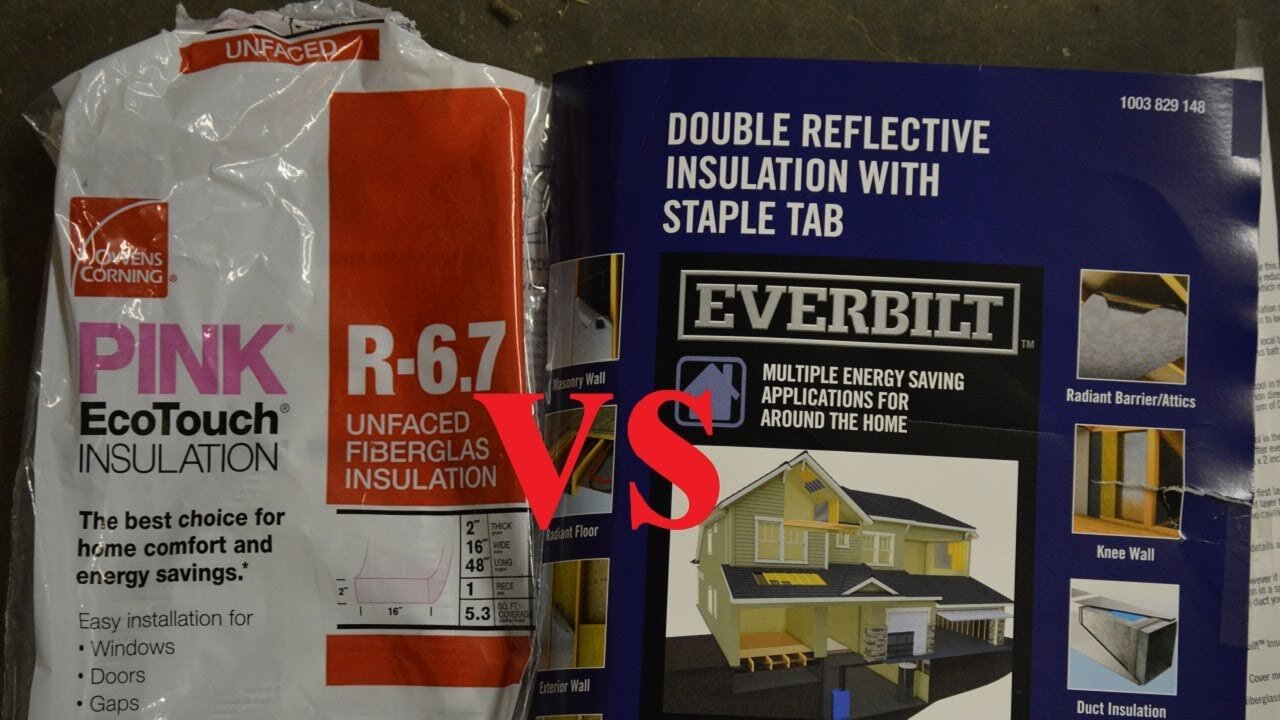Premium Only Content

Insulation Science w/ R Value Explained ~ You Can't Cheat Heat Transfer
While looking at my options for insulating the metal frame of my shop I did a quick experiment with some comparative analyses to discover/verify that R-Values are important and there's no cheating science.
The R Value of insulation is a rating the measures the resistance of heat transfer through that material. Therefore the higher the R-Value the lower the heat transfer and the better the insulating effect. Typically the two biggest factors to determining R Values is the material used and its thickness.
It might be tempting to jump for a thinner, cheaper insulation that claims a high R-Value but it's likely only applicable to very specific circumstances that likely don't apply to you. So understanding the factors involved in determining an R Value is very helpful.
Since most bulk insulation applications are some type of blow in, spray on or fiberglass batt insulation, and since there only a small difference in R-Value per inch of material on these insulations that means the name of the game is primarily thickness of insulation.
The heat transferred into a metal shop building is primarily from convective heat transfer and radiant heat transfer to the exterior of the building which is then conducted through the structure to the interior of the building. On the interior of the building convection heat transfer and radiant heat transfer then transfer the heat into the air inside. Use of insulation blocks both but it's effectiveness is heavily dependent on the material and thickness of the insulation.
I try and provide quality videos, if you enjoyed please subscribe. If you're not willing to subscribe then please tell me why in the comments so I can do better in the future. @GarageScience
Be sure to follow me on FB: https://www.facebook.com/GarageScience/
And on Instagram: @garage_science
-
 1:36:39
1:36:39
Redacted News
1 hour agoBOMBSHELL EPSTEIN SH*T SHOW JUST DROPPED ON WASHINGTON, WHAT IS THIS? | Redacted w Clayton Morris
23.6K69 -
 LIVE
LIVE
Revenge of the Cis
3 hours agoEpisode 1453: Fat & Fit
1,848 watching -
 2:38:12
2:38:12
The White House
4 hours agoPresident Trump Holds a Press Conference with Prime Minister Keir Starmer of the United Kingdom
34.5K19 -
 1:01:04
1:01:04
In The Litter Box w/ Jewels & Catturd
22 hours agoDrain the Swamp! | In the Litter Box w/ Jewels & Catturd – Ep. 751 – 2/27/2025
32.5K24 -
 1:11:24
1:11:24
Dr. Drew
5 hours agoNEW: Cardiac Arrest In Healthy Young People After mRNA w/ Nicolas Hulscher – Ask Dr. Drew
16.5K18 -
 4:24:53
4:24:53
Right Side Broadcasting Network
9 hours agoLIVE REPLAY: President Trump and UK Prime Minister Starmer Meet and Hold a Press Conference 2/27/25
108K43 -
 2:12:33
2:12:33
Adam Carolla
2 days agoKamala Harris vs. Trump Wildfire Response + Jillian Michaels on Motherhood/Ayahuasca & Sperm Donors!
17.4K11 -
 4:18:28
4:18:28
Barry Cunningham
7 hours agoTRUMP DAILY BRIEFING: PRESIDENT TRUMP AND UK PRIME MINISTER STARMER HOLD PRESS CONFERENCE!
33.6K11 -
 1:44:47
1:44:47
The Quartering
5 hours agoEpstein Files RELEASED Today, Gene Hackman Mystery & Trump Vs Woke Reporters!
67.1K31 -
 1:19:38
1:19:38
Ben Shapiro
5 hours agoEp. 2147 - HUGE: The Washington Post SURRENDERS…To Reality!
76.6K16